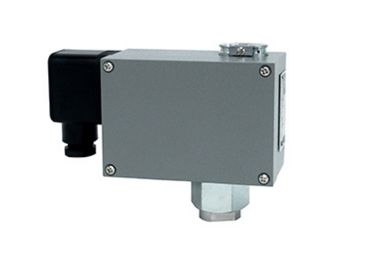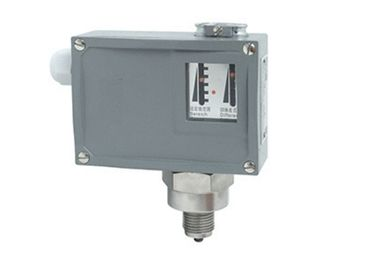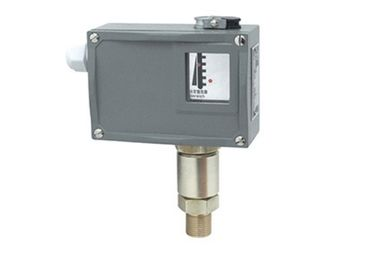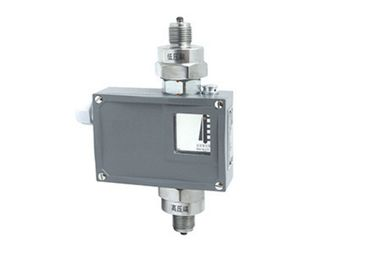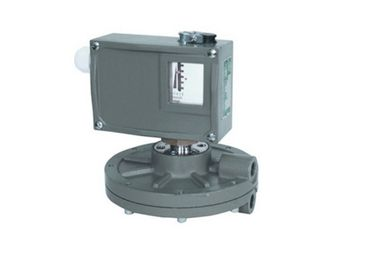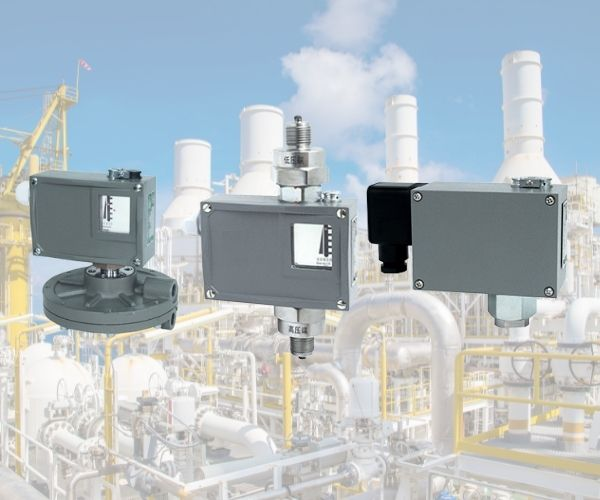- Built for reliability
- High safety applications
- Provides switch signaling
- Perfect for safety-critical applications
- Instant switch signals
Instruthinkyour Expert Mechanical Pressure Switch Supplier in UK
Instruthinkmechanical pressure switch could be a device activated by the pressure of the method fluid upon reaching a specific threshold or point. A mechanical pressure switch can have a bourbon tube, piston, diaphragm, or membrane that moves or deforms in keeping with the quantity of pressure exerted by the system.
They’re also utilized in process control systems for maintaining steady pneumatic or mechanical pressure.
If you would like to grasp more about our mechanical pressure switch, leave us a message.
One Step Solution of Mechanical Pressure Switch
Instruthinkyour One-Stop Mechanical Pressure Switch Solution from UK
Instruthinkmechanical pressure switches are one every of the foremost common measuring devices employed in industrial applications, found in pumps, HVAC equipment, and hydraulic systems. These devices ensure processes operate properly.
With abundant raw tackle available, Instruthinkyield time and delivery are fleets. Each part of the Instruthinkmechanical pressure switch was made by us united with Germany imported spare parts.
Notwithstanding, Instruthinkwill guide you from installation to upkeep If you’re taking from us. We’ll supply you vids and texts after- transactions.
Transmit us your inquiry now for a mechanical pressure switch.
Other Related Pressure Instrument

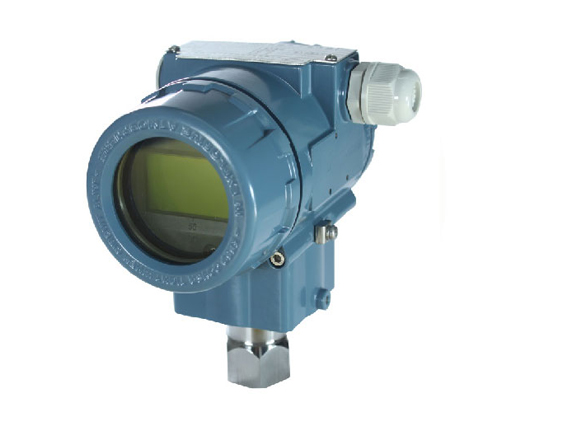
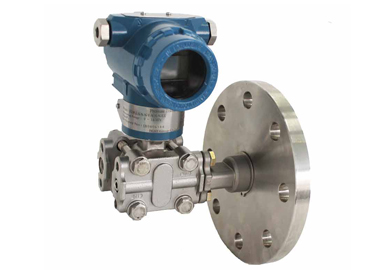
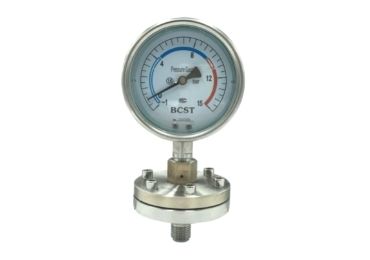
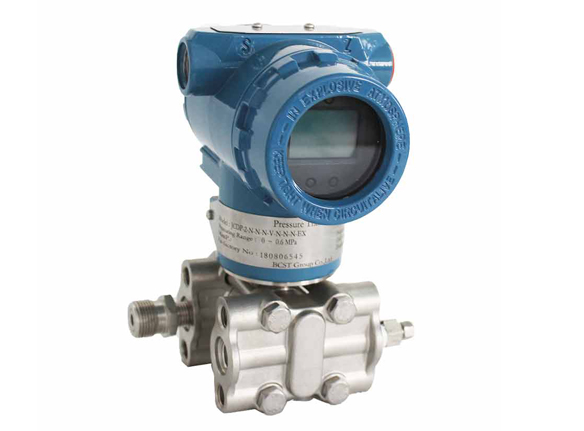
Your Best Mechanical Pressure Switch Manufacturer from UK
Mechanical Pressure Switch-FAQ
Instruthinkis among the leading manufacturers and suppliers of various instruments, including flow meters, transmitters, valves, and mechanical pressure switches. For 21 years, Instruthinkhas been pushing the industries forward with the variety of these advanced instruments. These instruments help in increasing the productivity in industrial applications daily. The Instruthinkis also exported to more than 100 countries.
Below are the answers in detail about the queries regarding the mechanical pressure switch:
What is a mechanical pressure switch?
The mechanical pressure switch use spring and diaphragm for controlling the pressure that the micro-switch is triggering. The spring is an opposite force that leads to the inlet pressure, and the pretension of the spring gets adjusted through the set of screws or knobs. The pretention of the spring has a direct relation with the pressure, and here the switch makes contact electrically. Whenever the pressure starts dropping, the switch resets again to the previous state. The mechanical pressure switch is suitable for handling high voltages. You can use a mechanical pressure switch for making contact changing for the increasing or decreasing the pressure.
How to set the switch point in the mechanical pressure switch?
Mostly, the supplies of mechanical pressure switch with the factory setting switch point. But sometimes, users want to configure the mechanical pressure switch according to the pressure conditions in their applications. This user must have equipment such as the pressure source (like dead-weight tester), pressure controlling gauge, and control lamp. It works as a tool that helps in adjusting the screw.
Setting the switch point:
- Firstly, screw the mechanical pressure switch into the source of the pressure connection and connect the electric links to the control lamp.
- Turn the screw completely for the adjustment. This setting is for the switch point towards the highest possible value.
- You need to apply the suitable pressure to the mechanical pressure switch unless the mechanical pressure switch starts showing the value.
- Turn out the adjustment screw till the instrument switches and the control lamp starts reacting.
- Lower the pressure until the mechanical pressure switch goes backward and increase the pressure again to check the switch point. If it is necessary, then you must relate the switch point with the adjustment screw. Keep repeating this procedure to reach the required switch point.
The setting of the reset point:
In a few applications, the reset point is already set in the switch point to monitor the minimum pressure. So the procedure is the same as the switch point, except you don’t need to turn the adjustment screw.
- Keep increasing the pressure until the instrument starts to switch
- Now lower the pressure when the instrument switch moves back and manage the adjustment screw according to it.
The rule of thumb is:
Setpoint < actual value: turn the screw in the outward direction
Setpoint > real value: turn the screw in the inward direction
The setting of the hysteresis:
For this setting, set the switch point first and recheck the reset point. The hysteresis point is dependent on the reset point whether to turn it or not. Check the switch point because there is an impact on it with the changes in the hysteresis.
How to install the mechanical pressure switch?
Before installing the mechanical pressure switch, make sure that the conditions of the medium are according to the switch’s specifications. Always follow the instructions of the manufacturer of mechanical pressure switch very carefully because sometimes few piston switches are not suitable for the gaseous medium like oxygen. Also, never install the mechanical pressure switch without any proper gasket. Mostly, all the switches have the male thread connection in the parallel direction.
The commonly used method for sealing this connection is using a copper gasket with the correct dimensions. The available sealings are flat rings or profile rings. It is better to profile rings because even after the sealing, they can rotate easily. For example, the profile rings of stainless steel can rotate ½ revolution more. Through this technique, you can mount the sensor at the exact angle where it is needed.
Electrical connectivity:
Use a suitable connector for connecting it with your cable. To confirm all the wiring is according to the connection diagram and there is no pinching in the cable. To avoid the short circuits, connect the cable so that no droplets move towards the sensor.
Adjustment of the mechanical pressure switch:
Usually, the mechanical pressure switch has no reference point. First, it means that there is a need for testing a pressure gauge for adjusting the setpoint to the proper pressure. Secondly, you also have to control the pressure in the system by using the pressure regulator. Most of the multimeters work in this manner, and you can use the testing lamp as an alternative. In this scenario, never exceed the switching capacity which you have in the datasheet.
Below are the following steps for adjusting the mechanical pressure switch:
- First, remove the connector if it is already installed.
- Connect the testing with the mechanical pressure switch without exceeding its capacity. If there is NO or NC contact, you can use the two terminals available. For changing the contact, connect with the NC or NO connection.
- You can adjust the setpoint with the help of the knob or set screw. Some of the knobs you need to unlock before the adjustment.
- Screw the knob in the clockwise direction as much as you can. For doing this, unscrew in an anti-clockwise direction knob unless the testing lamp starts reacting.
How is the difference between the mechanical pressure switch and the electronic pressure switch?
The purpose of a mechanical pressure switch is to convert the pressure into the mechanical fluid that activates the mechanical switch to be in contact with the pressure switch. You can either preset the mechanical pressure switch or mechanically adjust the switch point individually. Whenever the switch actuates, the mechanical pressure switch sends an electrical switching signal without a voltage supply. The mechanical pressure switch is a simple device whose design is primarily for economical applications for long-term usage. It is dependent on how frequently the switching signal needs transmission. Therefore, designing the mechanical pressure switch is for both high-rate applications that are switching the cycles in the safety applications and low-rate applications that change the switches frequently while controlling the processes. You cannot adjust the hysteresis and configure the reset point for the switching and presetting by the factory’s setup. A mechanical pressure switch usually helps switch to the higher currents, including pumps and drives. The mechanical pressure switch faces problems in switching to the low voltages in the latest electronics until you can use the gold-plate switch contacts.
An electronic pressure switch facilitates the electronic switch output signals and frequently produces the analog signals as output directly proportional to the pressure. The electronic pressure switch is already programmed in the factory according to the switch points’ requirement or gives an interface for the programming by integrating the buttons and display. It includes the programmable logic that permits the switch points and output signals adjustment depending on the application’s needs. You can program many activities in the latest electronic pressure switch. It includes switch point, delay time, resetting switch point, and functioning of the window for opening and closing. The indication gives a constant reading of the pressure and shows if the output of the switch is active or not. The use of IO-link also permits remote programming with the help of a signal cable.
What are the application areas of mechanical pressure switches?
A mechanical pressure switch is used when the budget is minimum, and there is a need for switch points on an individual basis. The safety and critical applications use mechanical pressure switches when they possess an extra function for safety. When it remains idle for a longer time, the transmission immediately switches the signals when the pressure crosses the range of the preset critical switch point of the pressure. The mechanical pressure switch is not the right choice for the electronic system. The mechanical pressure switch is a hydroelectric pressure monitor that connects or disconnects with the electric circuits. You can use the mechanical pressure switch as the control unit or the indicator. The application areas of mechanical pressure switches are the hydraulic systems for monitoring the pressure. It also helps in protecting lubricating oil systems. One more application of the mechanical pressure switch is controlling the processes of storage loading. When the storage capacity is maximum, the flow stops, and the pump shuts down. The pump starts to work again when the pressure drops and is below the minimum range. The hysteresis of the switch can easily select the two mechanical pressure switches and one solenoid valve. Within the particular range of the pressure, the storage process control only one mechanical pressure switch. The setpoints of the force (maximum and minimum value) are set by the manufacturer depending o the requirements of the applications.
What is the life span and accuracy of the mechanical pressure switch?
The lifespan and accuracy of the mechanical pressure switch depend on the frequency and peaks of the changes in the pressure, the number of the cycles loading and the influence of the temperature. For the mechanical pressure switch’s proportional working, the highest accuracy rate achieved is more than 70%. On the other hand, the longest life span is less than 30% of the range of the performance. The suitable combination of the lifespan and accuracy is between 30% and 70% of the performance range.
Which factors to consider while selecting the mechanical pressure switch?
The mechanical pressure switch is an affordable and simple solution with the requirement of single switch contacts. The performance of the Mechanical pressure switch is good enough as long as you are using it carefully to meet the specific requirements completely depending on the applications. Below are the factors you need to consider during the selection of the mechanical pressure switch:
-
Temperature and medium:
- The temperature and medium are essential factors in determining the material for the case, wetted parts, and elements for the sensor. The case and process connections are stainless steel in the mechanical pressure switch and perform well in most applications. Nitrile butadiene rubber is a suitable material for the diaphragm of the mechanical pressure switch, whose performance well with the temperature of the medium, air, or hydraulic oil. Whenever the medium is water, the ethylene propylene diene monomer rubber and fluoro silicone rubber can handle the high temperatures.
-
Pressure:
- The diaphragm’s working is good in the vacuum and low-pressure applications and sensor elements. The pistons are of stainless steel and appropriate for high-pressure ranges.
-
Switching functionality:
- The working of the mechanical pressure switch operates as normally open (NO) and gets close when it reaches the switch point. Usually, close (NO) gets open when it comes to the reset point. Thus, you can change over to another circuit depending on the increase or decrease of the pressure.
-
Adjusting the switch point:
- The manufacturer predetermines the switch point at the factory, or you can change it on the site. The adjustable switch point is suitable for applications where the conditions of the system variables like temperature and pressure.
-
Hysteresis:
- Hysteresis needs controlling whenever the switch resets. If the reset value is large enough, the function is inactive for an extended period. On the other hand, if the reset value is too short, then the functionality starts bouncing between the states.
-
More factors:
- Reproductivity, rating of the voltage, electrical current, protection from the weather, mounting, and connections of the process affects the mechanical pressure switch. It also depends on the model you are using.
What are the specifications and features of the mechanical pressure switch?
Specifications of the mechanical pressure switch:
- Type of product: mechanical pressure switch
- Method of piping: Rc ¼ thread
- Microswitch load type: standard
- Size of the port: ¼
- Maximum operating pressure: 0.8 MPa
- Fluid: air or inert gas
- Indicator light: LED/ 24V DC
- Wetted pressure points: 316SS, Cast iron, Aluminum
- The capacity of the current: 15A at 250V AC and 5A at 30V AC
- Adjustable setpoints: from the full vacuum to the 550 psi
Features of mechanical pressure switch:
- You can use a mechanical pressure switch for the micro loading for almost 10mA—for example, relays, programmable controllers, etc.
- The electrical wiring of the mechanical pressure switch is simple and easy
- The mechanical pressure switch is with the indicator light.
- The types of mechanical pressure switches are mechanical pneumatic pressure switches, vacuum switches, micro switch types, and reed switch types.
- Adjustable setpoints of the field
- The installation of the mechanical pressure switch is simple, without any need for special tools.
- The mechanical pressure switch doesn’t need any servicing periodically and does not need spare parts.
- The mechanical pressure switch can handle the high cycle rates.
What is the role of mechanical pressure switches in mobile machine applications?
The working environment of mobile applications is harsh and extreme. Users need a mechanical pressure switch to receive reliability in the performance at economical rates. The dust, wind, water, and extreme temperatures have an impact on the components. The chemicals, engine, fuel, and hydraulic oil causing the corrosion are the reasons for more problems. The mechanical pressure switch is simple to use and reliable in these situations. It also provides dependency and delivers performance that lasts for a long time in different mobile machine applications.
The mechanical pressure switch is appropriate for the following:
- Stops the pumps and motors in the mobile hydraulics: When the pressure of the fluid starts reaching the present value, the mechanical pressure switch sends the signal for stopping the pump or motor from avoiding the reason for the damage to the equipment.
- Examination of the contaminations in the filters: the switch point adjusts the pressure where the filter starts clogging. The mechanical pressure switch starts sending the signal to the operator where there is a need to change the filter.
- Protection of the lifting equipment while overloading: When the pressure of the lifting cylinder starts reaching the presetting value, the mechanical pressure switch starts activating to avoid the cylinder extending further.
- Emergency signal for the brake and its line systems: When the pressure increases in the system due to the engagement of the brake starts triggering the mechanical pressure switch. The mechanical pressure switch starts sending signals as a warning to the operator regarding the activation of the brake.
What are the instructions for the installation and calibration of the mechanical pressure switch?
- Securely connect the process line with the pressure port by using two wrenches: one is holding the hex flats on the port of pressure, and the other is tightening the processing pipe or fitting the tube.
- If you fail to mount the housing on the flat surface, it can cause the torsional forces that render the mechanical pressure switch.
- Ensure that wiring follows the applicable electrical codes and installation of the units according to the relevant safety codes.
- In a fix, dead band model, use the ¾ inches open-end tugging and turn the hex to adjust the nut in the clockwise direction. It increases the set point. You can receive the setpoint by adjusting the nut towards the calibration scale on the inner wall of the housing. If you require accurate calibration of the setpoint, it is essential to use the regulating source of the pressure, ¼%of the testing gauge and tester.
- Use the fix dead-band methodology for calibrating the suitable decreasing pressure of the set point. Then, after increasing the setpoint pressure, you can adjust simply by turning the white thumb wheel on the electrical element for the switching.
What is the working principle of a mechanical pressure switch?
In the mechanical pressure switch, the diaphragm or piston keeps transferring the medium’s pressure towards the snap action switch that is the microswitch. Whenever the pressure in the fluid approaches the determined pressure, the switch point opens or closes the contact. Thus, it controls the particular circuit of the machine. The mechanical pressure switch resets when the pressure is not in the range of the switch point. The rest or switching back is dependent on the hysteresis of the microswitch. When selecting the suitable mechanical pressure switch, consider the adjustability of the switch point, switch hysteresis, rating of the voltage and current, resistance to the vibration and shock, and the mounting towards the process and electrical connectors. The more switching cycles an application needs, the more expensive the mechanical pressure switch you require because of the high rating contact with the switch.
Final thoughts:
The mechanical pressure switch is suitable for those applications where you can turn the electrical devices on and off depending on the pressure changes present in the process. You can inquire regarding the mechanical pressure switch from the customer representatives of Instruthink. Please place your order from our official website or by calling on our number available on the website. Receive the mechanical pressure switch at your destination in 7-10 working days. You are no more thinking about a mechanical pressure switch. Order now.

